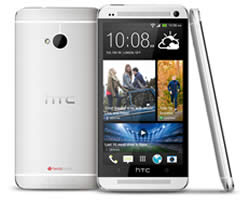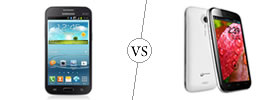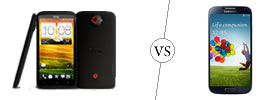Difference between HTC One and HTC One with Nexus User Experience
Key Difference: HTC has launched its flagship phone HTC One with a brand new Qualcomm quad-core processor which sports a 4.7 inch Super LCD3 screen, with Full HD1080p, 468 PPI and corning gorilla glass 2. The HTC One with Nexus User Experience (NUE) is basically the same HTC One phone in terms of design and aesthetic appeal with just a different user interface. The company has employed a Google Nexus pure Android interface that does not have Developer customizations on it.
One of the most common answers to the old question, ‘What is the one thing you can’t live without?’ results in the answer phone. Phones have become a crucial part of many people’s lives. The newer the phone, the better the technology has made these phones very important. Each new phone is better, faster more advanced and is packed with features. Many companies are also issuing same phones with different technologies to offer even more people. HTC has collaborated with Google to offer the popular The One with a new interface. It is known as HTC One with Nexus User Interface.
 HTC One was originally launched as the brand name for a series of Android phones by the company. These included HTC One X, HTC One X+, HTC One V, etc. Now, the company launched a new phone with the name HTC One. The HTC One X was launched in May 2012. This often causes confusion as this phone is expected to be a successor to the One X. HTC One is expected to be superior compared to the One X in hardware design and software design. It also includes a unique camera implementation.
HTC One was originally launched as the brand name for a series of Android phones by the company. These included HTC One X, HTC One X+, HTC One V, etc. Now, the company launched a new phone with the name HTC One. The HTC One X was launched in May 2012. This often causes confusion as this phone is expected to be a successor to the One X. HTC One is expected to be superior compared to the One X in hardware design and software design. It also includes a unique camera implementation.
In terms of hardware and software, HTC One sports a 4.7 inch Super LCD3, with Full HD1080p, 468 PPI and corning gorilla glass 2. The HTC One comes with Android v4.1.2 Jelly Bean that is upgradable to v4.2.2. The case is an all-aluminum frame with an antenna built into its backing. It includes a 1.7 GHz quad-core Snapdragon 600 processor, Adreno 320 GPU and 2 GB DDR2. The phone is available with non-expandable, 32 or 64GB internal capacity. It offers a 4 megapixel 2688 x 1520 pixels primary camera with autofocus, LED flash and BSI sensor, along with a 2.1 MP, 1080p@30fps, HDR secondary camera.
The main feature is the new pixilation system that is opted in the primary camera of the phone, which provides each pixel size of 2.0 µm and sensor size of 1/3'. The One also includes a new camera app known as ‘Zoe’, which records a short video alongside every photo taken and allows the resulting photos and videos to be automatically combined and synchronized with music to produce a multimedia presentation known as a Zoe. The One also offers a new feature on the home screen known as the BlinkFeed. This is a newsfeed that automatically upgrades every two hours if connected with a mobile service or more frequently when connected via WiFi. The BlinkFeed takes up the main home screen and cannot be removed, resulting in the home screen as not being as customizable as in the previous phones. The price of the phone has not yet been released.
 The HTC One with Nexus User Experience (NUE) is basically the same HTC One phone in terms of design and aesthetic appeal with just a different user interface. The company has employed a Nexus pure Android interface that does not have Developer customizations on it. It is a special edition phone that is being targeted at the people that like the no-nonsense Android UI. The HTC One with NUE strips away the HTC Sense User Interface and just keeps the pure android on the device. So, what does this mean in terms of usage? Well, there will be a bunch of new features available including a few features will be lost.
The HTC One with Nexus User Experience (NUE) is basically the same HTC One phone in terms of design and aesthetic appeal with just a different user interface. The company has employed a Nexus pure Android interface that does not have Developer customizations on it. It is a special edition phone that is being targeted at the people that like the no-nonsense Android UI. The HTC One with NUE strips away the HTC Sense User Interface and just keeps the pure android on the device. So, what does this mean in terms of usage? Well, there will be a bunch of new features available including a few features will be lost.
There will no longer be the HTC BlinkFeed. The homescreen which displayed notifications in a tile format will be replaced with the normal Android homescreen with icons and widgets. The color of the device is also not going to change, which means the Special Edition will also only be available in Silver. In addition to BlinkFeed, the user will also lose HTC features such as HTC's launcher, menu adaptations, IR Blaster and HTC's new TV app.
HTC’s Zoe camera application will also be stripped away and replaced with the normal settings that are found on the Nexus 4. However, the company will keep the UltraPixel sensor. No Zoe applications means no animated galleries or video summaries. The HTC One NUE will also have dual stereo front-facing speakers, but the Beats option will not be available. While many people might opt for the no-nonsense option, many people will still stick to the Original HTC One. The HTC Sense combines the user-friendly interface of Android as well as the little extra fun by HTC.
The information for the detailed table about the two phones has been taken from the HTC website and GSMArena.com.
|
|
HTC One |
HTC One with Nexus User Experience |
|
Launch Date |
Expected release March 2013 |
Expected release June 2013 |
|
Company |
HTC Corporation |
HTC in collaboration with Google |
|
Size |
137.4 x 68.2 x 9.3mm |
137.4 x 68.2 x 9.3mm |
|
Display |
4.7 inch Super LCD3 |
4.7 inch Super LCD3 |
|
Screen |
1080p, 468 PPI (Full HD) |
1080p, 468 PPI (Full HD) |
|
Protection |
Corning Gorilla Glass 2 |
Corning Gorilla Glass 2 |
|
Weight |
143g |
143g |
|
2G Network |
HSPA/WCDMA: Europe/Asia: 850/900/1900/2100 MHz |
HSPA/WCDMA: Europe/Asia: 850/900/1900/2100 MHz |
|
3G Network |
GSM/GPRS/EDGE: 850/900/1800/1900 MHz |
GSM/GPRS/EDGE: 850/900/1800/1900 MHz |
|
GUI |
HTC Sense 5 |
Android UI |
|
CPU speed |
Qualcomm® Snapdragon™ 600, quad-core, 1.7GHz |
Qualcomm® Snapdragon™ 600, quad-core, 1.7GHz |
|
GPU |
Adreno 320 |
Adreno 320 |
|
OS |
Android OS, v4.1.2 (Jelly Bean), upgradable to v4.2.2 (Jelly Bean) |
Android OS v4.2.2 (Jelly Bean) |
|
Chipset |
Qualcomm APQ8064T Snapdragon 600 |
Qualcomm APQ8064T Snapdragon 600 |
|
RAM |
2 GB DDR2 |
2 GB DDR2 |
|
SIM Size |
microSIM |
microSIM |
|
Internal Memory |
32/64 GB |
32/64 GB |
|
Expandable Memory |
No |
No |
|
Sensors |
Gyro sensor, Accelerometer, Proximity sensor, Ambient light sensor. |
Gyro sensor, Accelerometer, Proximity sensor, Ambient light sensor. |
|
Connectivity |
Compliant with Bluetooth 4.0, Bluetooth 4.0 with aptX™ enabled, Wi-Fi: IEEE 802.11 a/ac/b/g/n, DLNA, micro-USB 2.0. |
Compliant with Bluetooth 4.0, Bluetooth 4.0 with aptX™ enabled, Wi-Fi: IEEE 802.11 a/ac/b/g/n, DLNA, micro-USB 2.0. |
|
Data |
GPRS, EDGE |
GPRS, EDGE |
|
Speed |
HSPA+; LTE, Cat3, 50 Mbps UL, 100 Mbps DL |
HSPA+; LTE, Cat3, 50 Mbps UL, 100 Mbps DL |
|
WLAN |
Wi-Fi 802.11 a/ac/b/g/n, Wi-Fi Direct, DLNA, Wi-Fi hotspot |
Wi-Fi 802.11 a/ac/b/g/n, Wi-Fi Direct, DLNA, Wi-Fi hotspot |
|
Bluetooth |
Compliant with Bluetooth 4.0, Bluetooth 4.0 with aptX™ enabled |
Compliant with Bluetooth 4.0, Bluetooth 4.0 with aptX™ enabled |
|
USB |
micro-USB 2.0. |
micro-USB 2.0. |
|
Primary Camera |
4 megapixel 2688 x 1520 pixels, autofocus, LED flash BSI sensor, Pixel size 2.0 µm, Sensor size 1/3', Dedicated HTC ImageChip™ 2 F2.0 aperture and 28 mm lens |
4 megapixel 2688 x 1520 pixels, autofocus, LED flash BSI sensor, Pixel size 2.0 µm, Sensor size 1/3', F2.0 aperture and 28 mm lens |
|
Secondary Camera |
2.1 MP, 1080p@30fps, HDR |
2.1 MP, 1080p@30fps, HDR |
|
Video |
1080p@30fps, HDR, stereo sound rec., video stabilization |
1080p@30fps, HDR, stereo sound rec., video stabilization |
|
Camera Features |
Continuous shooting and VideoPic, Slow motion video recording with variable speed playback, HTC Zoe™ with HTC Zoe™ Highlights and HTC Zoe™ Share Retouch with Object Removal, Group Retouch, and Sequence Shot. |
Continuous shooting and VideoPic, Slow motion video recording with variable speed playback. |
|
Sound Enhancement |
HTC BoomSound, Dual frontal stereo speakers with built-in amplifiers, Beats Audio, HDR Microphone and Sense Voice. |
Dual frontal stereo speakers with built-in amplifiers, HDR Microphone and Sense Voice. |
|
Audio supported formats |
Playback: .aac, .amr, .ogg, .m4a, .mid, .mp3, .wav, .wma (Windows Media Audio 9) Recording: .amr |
Playback: .aac, .amr, .ogg, .m4a, .mid, .mp3, .wav, .wma (Windows Media Audio 9) Recording: .amr |
|
Video supported formats |
Playback: .3gp, .3g2, .mp4, .wmv (Windows Media Video 9), .avi (MP4 ASP and MP3) Recording: .mp4 |
Playback: .3gp, .3g2, .mp4, .wmv (Windows Media Video 9), .avi (MP4 ASP and MP3) Recording: .mp4 |
|
Battery Capacity |
2300 mAh |
2300 mAh |
|
Stand-by |
No official data is released |
No official data is released |
|
Talk time |
No official data is released |
No official data is released |
|
Available Colors |
Gray, White, Black, with more colors to come. |
Silver |
|
Messaging |
SMS (threaded view), MMS, Email, Push Email |
SMS (threaded view), MMS, Email, Push Email |
|
Browser |
HTML, Adobe Flash |
HTML, Adobe Flash |
|
Radio |
Stereo FM radio with RDS |
Stereo FM radio with RDS |
|
GPS |
A-GPS support |
A-GPS support |
|
Java |
Java MIDP emulator |
Java MIDP emulator |
|
Additional Features |
Beats Audio, Active noise cancellation with dedicated mic, Dropbox (25 GB storage), TV-out (via MHL A/V link), SNS integration, Google Search, Maps, Gmail, YouTube, Calendar, Google Talk, Document viewer/editor, Voice memo/dial/commands, Predictive text input. |
Active noise cancellation with dedicated mic, Dropbox (25 GB storage), TV-out (via MHL A/V link), SNS integration, Google Search, Maps, Gmail, YouTube, Calendar, Google Talk, Document viewer/editor, Voice memo/dial/commands, Predictive text input. |
Image Courtesy: anandtech.com, blog.htc.com









Add new comment